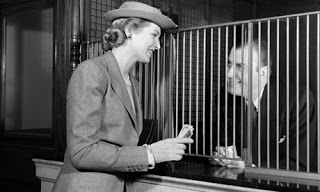On Monday, the Federal Reserve met to discuss the discount rate. There has been a steady increase in the number of regional Federal Reserve presidents requesting an increase in the discount rate. The minutes of the October 26 meeting were reported yesterday.

The meeting was held before the FOMC met on October 27-28. At that meeting, nine of the 12 regional presidents expressed a preference to lift the discount rate. It is a preference because it is ultimately up to the Board of Governors. The Boston Fed joined eight of the regional reserve banks that wanted to hike the discount rate in September. In July and August, only five favored an increase.
The Minneapolis Fed continued to call for a cut in the discount rate. When its enigmatic President, Kocherlakota steps down next year, the Minneapolis Fed is likely to move back to the consensus. The Chicago Fed President Evans continued to favor a standpat policy. Evans has argued against a rate hike this year.
Evans and Kocherlakota are the doves, and although many observers claim Yellen is a dove, we argue the chair defines the spectrum. Given the current views, Yellen is a centrist, with doves on one side of her and hawks on the other. Perhaps most telling is that the NY Fed President, who unlike the other regional Fed presidents, has a permanent vote on the FOMC. Dudley did not support a discount rate hike in October. The minutes of this week’s meeting will not be released until after the December FOMC meeting.
Before the crisis, there was 100 bp premium for discount window borrowings over the Fed funds target. During worst of the crisis, and as part of the accommodative stance, the premium was reduced to 50 bp. In February 2010, a 75 bp premium was re-established over the top of the Fed funds range. As part of the normalization of monetary policy, a 100 bp spread is likely to return. There is a reasonably good chance that when the Fed lifts the Fed funds target is will grant the request of three-quarters of the regional Fed presidents.












Leave A Comment